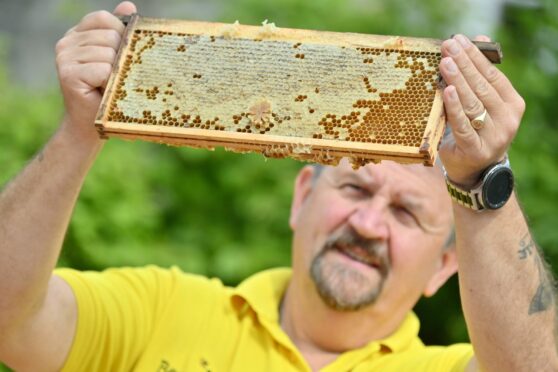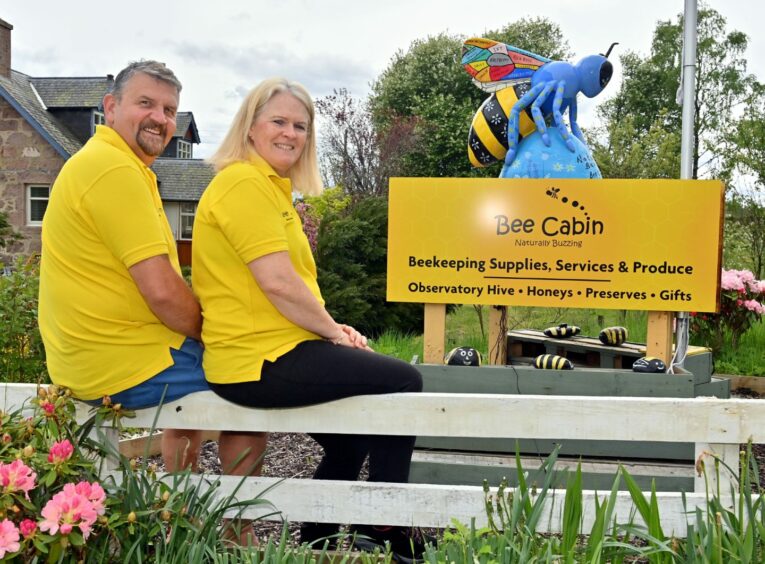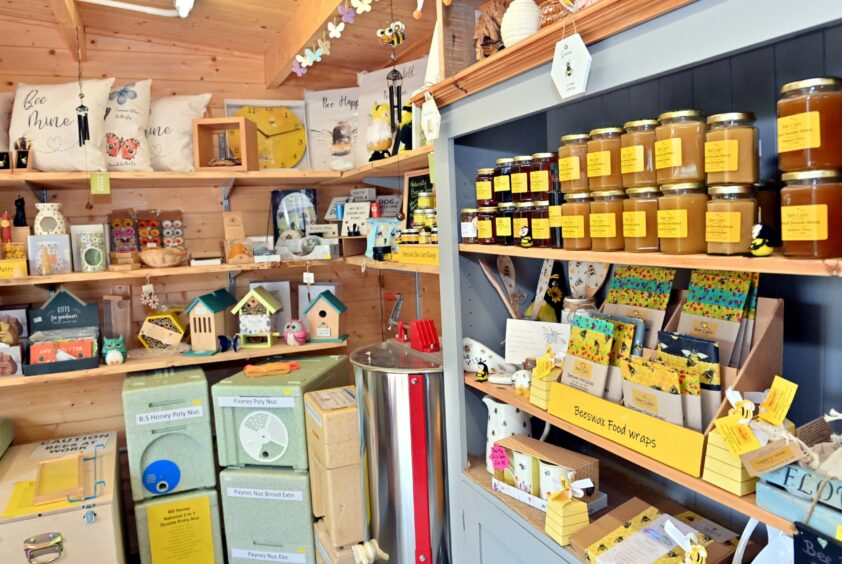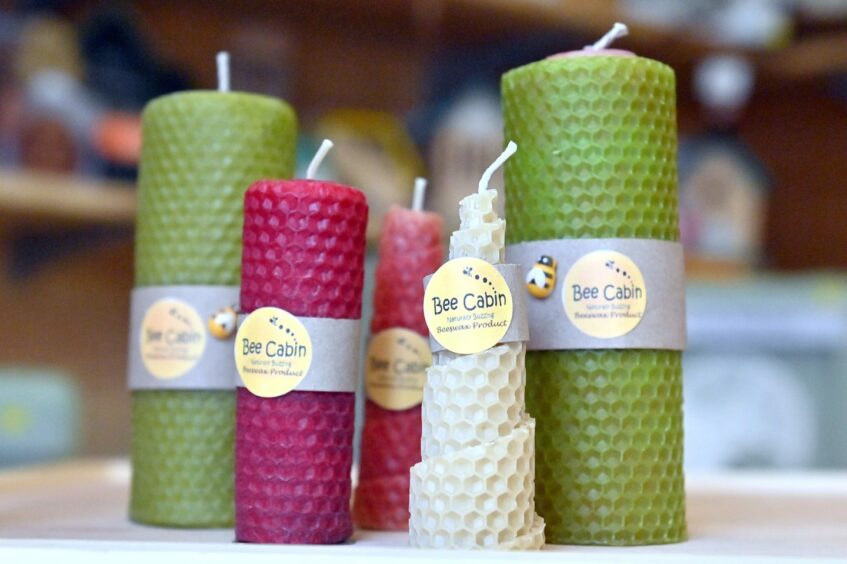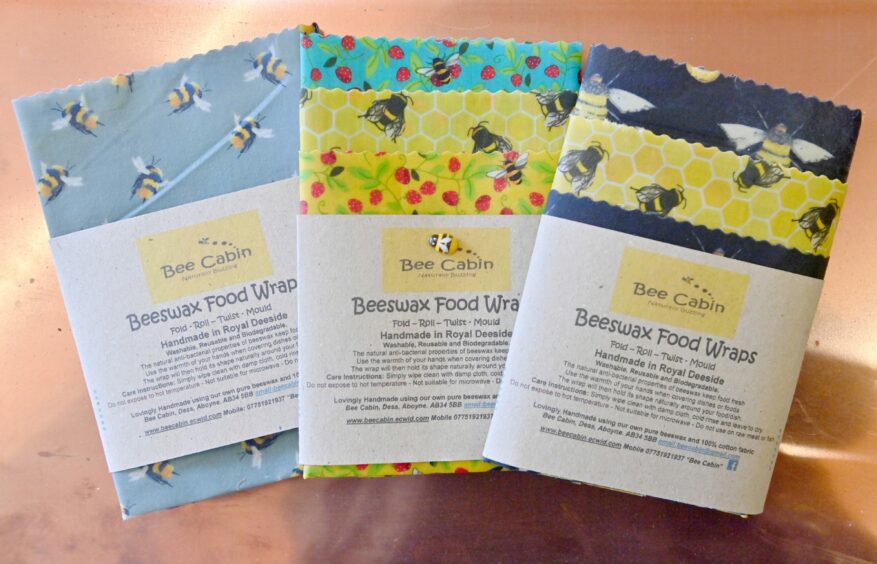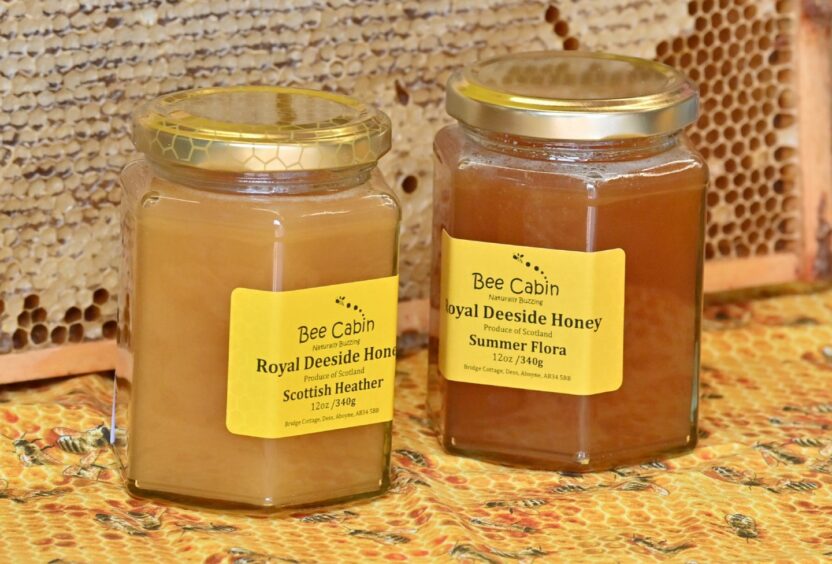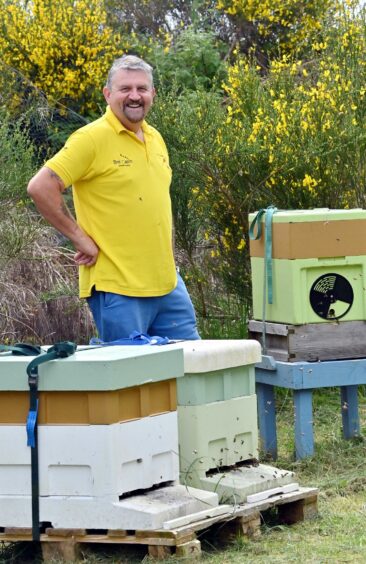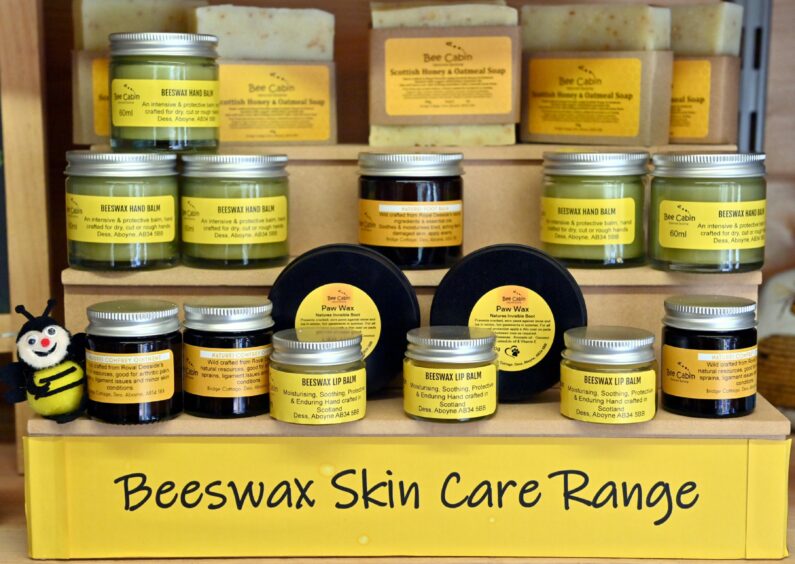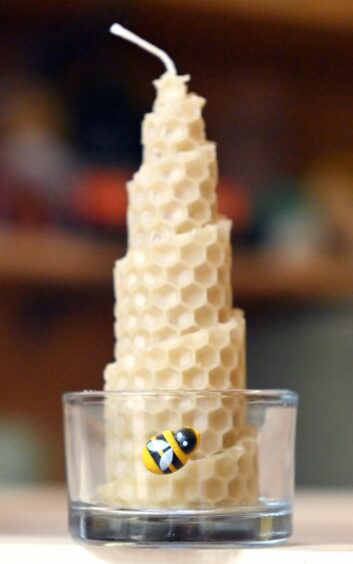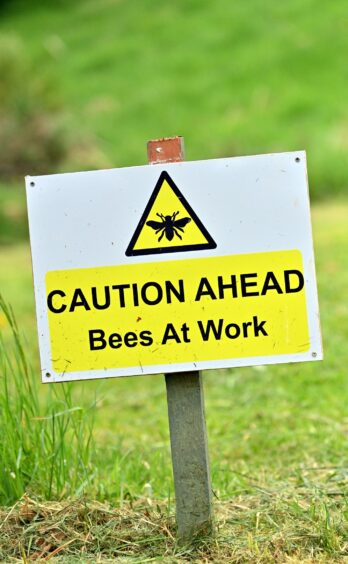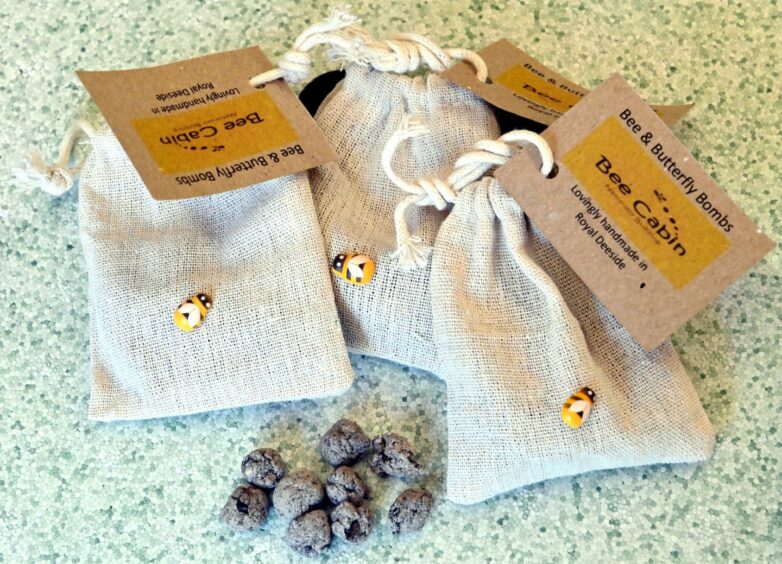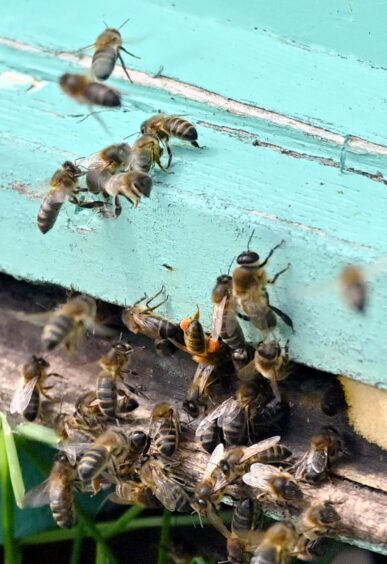Here at Society, we’re conscious to do our bit for the environment.
And if that means spreading the word about a fabulous business in Royal Deeside, well can we get a big fat yes to that please?
We’re not going to buzz around the bush, welcome to Bee Cabin in beautiful Aboyne.
This small but mighty business is run by Colin Devine, who recently retired from Scottish Fire and Rescue, and Fiona Birnie who is a medical secretary.
But while it may be just the two of them on the ground, dozens of their apprentices take to the skies year and year.
With 58 bee colonies, around half of which are on site at the idyllic Bridge Cottage, Colin and Fiona have created something pretty special.
Now in their fifth year, Bee Cabin has grown steadily more popular.
And it’s not just honey which you can buy from their enterprising pair.
Gifts aplenty
They’ve since spread their wings and now offer a whole range of gorgeous gifts, from hand-made bees wax wraps to candles, skincare and the lovely named bird house hotels.
Fiona also stocks her home-made preserves, and they’ve even come up with a soothing wax balm concocted especially for sore paws belonging to four legged friends.
Zero waste is at the heart of Bee Cabin, alongside a determination to educate people about the work of bees.
Indeed Colin and Fiona are the go to people if you’re thinking about venturing into bee keeping.
They offer all manner of beekeeping equipment, alongside beekeeping experiences.
We caught up with the pair and found out why one hive was the catalyst for a new way of life.
A shared passion
“It all started off when we fell in love with Bridge Cottage at Dess, near Aboyne,” said Fiona.
“We moved here in 2015. Colin was brought up in Aboyne, and I spent practically every weekend here during my childhood.
“Our cottage is only a few minutes walk from the River Dee.
“Colin got one hive, which grew to two, four, six and now we have more than 50.
“We have a shared passion for what we do, and now we have 58 colonies.
“Around half are on the heather hills between Ballater and Dinnet, our Scottish heather honey is a top seller.
“The remaining colonies are on site here, we built the first cabin in 2017 when Colin saw a gap in the market for bee keeping supplies.”
Alongside helping fellow bee keepers, Colin also specializes in honey extraction.
“In our first cabin, we had a small area for a shop which sold honey and jam,” said Colin.
“We needed more space so we could better display our products, so we built a second cabin in our garden in 2019.”
Getting creative
With bees comes wax, and the couple decided to put this natural product to good use.
Beeswax wraps can be used for keeping food fresh, and make a fantastic re-useable option in comparison to clingfilm.
“Fiona started making the wax wraps, and they’ve been incredibly popular,” said Colin.
“We sell loads of them, and make different patterns in different sizes.
“The majority are used for food, but we’re also branching out into using them to wrap soap in.
“This can make it a lot easier when you’re travelling.”
Learning about beeswax
But where does the wax actually come from in the first place?
Society thankfully got an education, so you’re not left wondering.
“When the bees make honey in the wax combs, they cap off the top with more beeswax,” explained Colin.
“When we come to extract the honey from the combs, we lift off these wax caps.
“We keep them, melt them down and are left these wax blocks.
“It’s a very messy job, but the wax is now used in our wraps, candles and skincare.”
Fiona never considered herself the crafty type of person, prior to creating products that are now very much in demand.
“We don’t use plastic unless we absolutely have to,” she said.
“The majority of our gifts are made from recycled or hand-made materials.
“We had all this wax and had heard about wraps.
“I remember starting out with my ironing board, and I made an awful mess.
“Now I’ve mastered it, the wraps are made from 100% pure bees wax and come with a natural cardboard wrapper.
“We also offer a free replenishment service, so when your wrap becomes a little faded, we can sort that out.
“I find the whole process very therapeutic.”
Deploying bee bombs
Fiona and Colin work from April through to October in keeping with the bee season, and have clearly thought long and hard as to how to help people support the bee population.
Their home-made bee bombs are perfect for attracting bees to your garden.
“We take some compost and wild flower seeds particularly suited to bees and butterflies,” said Fiona.
“Then we get some clay and make another great big mess.
“You can either grow where you’ve scattered or plant them out. The seed mix includes marigolds, daisies and poppies.
“Bees can fly up to three miles to get pollen and need fuel stops.
“By having wild flowers in as many areas as possible, you can give them the energy to fly back to their hives.”
So there you have it, bees really are magical creatures.
“We’d like to thank all our customers for their support,” said Fiona.
“We don’t make a tremendous amount from what we do, we always set out to educate people.
“And we absolutely love it when people visit Bee Cabin.”
For more information on Bee Cabin, visit them online or check out their Facebook.
